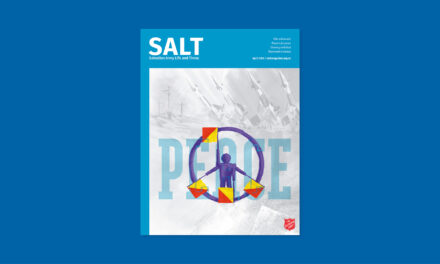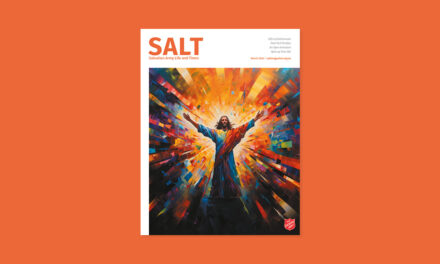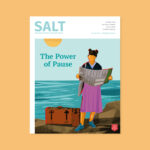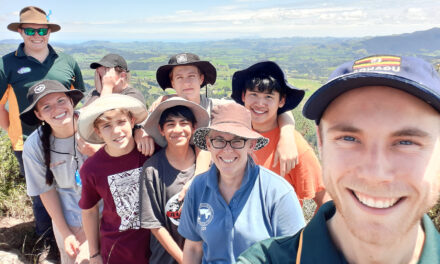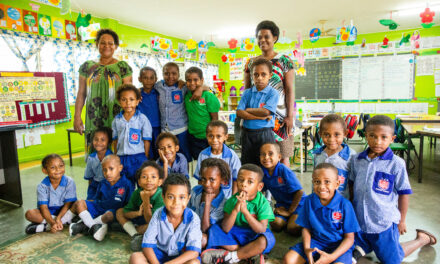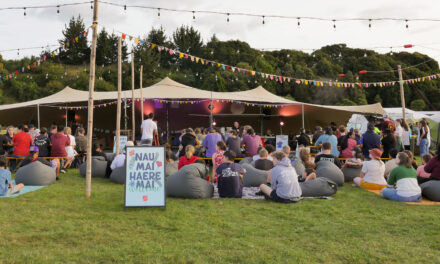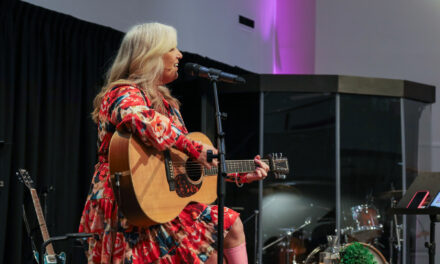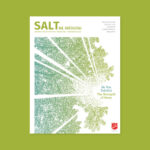
Inspiring Hope for 50 Years!
For 50 years, Christchurch Bridge has been a beacon of hope for countless people caught in the clutches of addiction and despair. War Cry looks back to the beginnings of the addiction centre and the success of the treatment programme.
Hope is no small thing. It may begin as a spark, but it doesn’t stay that way—especially when God’s involved. Even the tiniest ember can be fanned into a powerful flame.
‘If you feel like your hope is gone and everyone has given up on you—well, that’s just not the case at all because the Sallies don’t shut the door on anyone,’ says Juanita Hickey. ‘I now have hope and belief within myself. When I was at the Bridge, I found that having that one little thing to hope for—hope that I could get my life back—well, that was the start. The hope that I could have an even better life than before grew from there. So, fifty years of the Bridge? Well, I’m celebrating hope; hope for me and hope for others!’
A bridge to hope
The Christchurch Bridge was modelled on the success of addiction work in Wellington and Auckland. The Salvation Army had high hopes for its newest addiction treatment centre in Christchurch—the first of its kind in the South Island. In November 1972, the Christchurch Star wrote the following description of the venture:
A little wooden bridge spans the boundary between The Salvation Army Addington Social Service Centre in Poulson Street and its adjourning property facing Collins Street. And in more ways than one that bridge is indicative of the work which will be carried out in the Collins Street house from November 12. At present the large old house is being converted into a Salvation Army ‘Bridge Centre’—a midway home for alcoholics bridging the gap between their old life and a new life.
Still going strong
The Christchurch newspaper The Press reported Lt-Colonel Frank Hay’s humble words at the official opening: ‘We are just starting, and are on a tight budget, but we are hoping to build something worthwhile.’
Major Sue Hay, current director of Christchurch Bridge says, ‘Fifty years on and we are still here and going strong’. Following 20 years of service working in the addiction space, Sue has been involved in the evolution and development of the Army’s treatment programme. ‘The biggest changes in 50 years are all about the treatment,’ she explains.
‘Fifty years ago, the Bridge team started doing what was hoped would work. These days, Bridge programmes have access to research which informs how we partner with people on their recovery journey,’ affirms Sue. ‘The Bridge’s four-pronged Model of Treatment includes the evidence-based Community Reinforcement Approach which focuses on strengthening positive lifestyle choices and life-giving connections with friends, whānau, the wider community and a “higher power” we call God.
‘In the early 1970s, attitudes in the community were more around addiction being a moral issue. People were considered weak because they couldn’t control their use of alcohol. Now it is understood that for many people addiction becomes a coping mechanism for past trauma—people are trying to manage their life or mask their pain because it’s too unbearable to face,’ says Sue.
This was certainly true for Juanita. Following treatment in 2010, she maintained sobriety for eight years, completing a social work degree during that period. However, Juanita was faced with the unthinkable when both her sons were killed in a car accident. Prescribed benzodiazepines by her GP to help manage the resulting trauma, Juanita lapsed back into addiction. A year and, half later she reached out for help. ‘I had to face my grief sober,’ she says. ‘I really wanted to get clean and get my life back on track.’
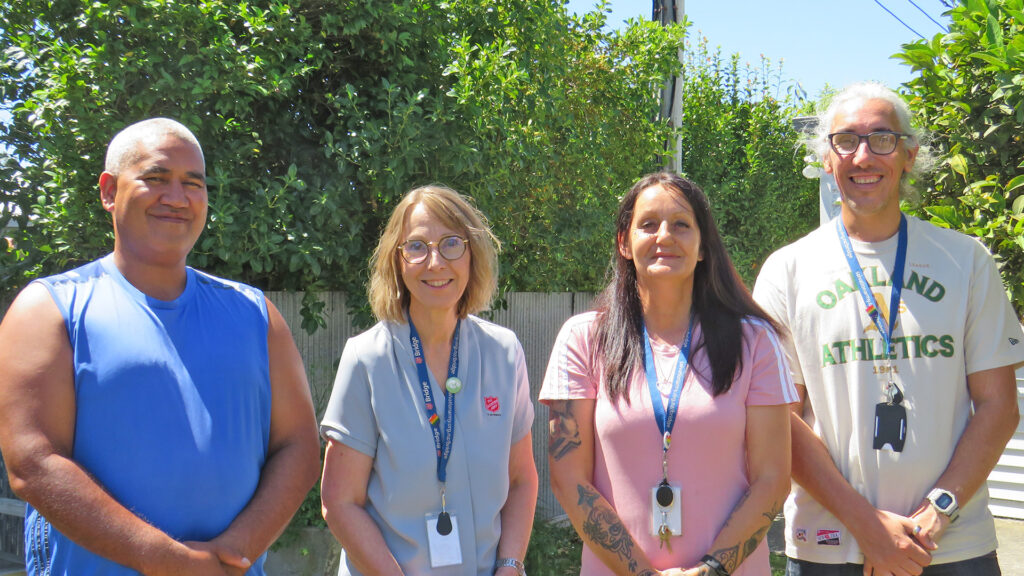
A pilot scheme takes off
Interestingly, while The Salvation Army had considerable experience working with alcoholics when the new centre opened, its programme for drug addicts was a pilot scheme. Quoted in The Press, Lt-Colonel Frank Hay explained, ‘We can only see how it turns out. We can gain experience, and if it works, we will extend the work.’ Fifty years on from that tentative beginning, treatment is now offered for all substance abuse—and recovering addicts with lived-experience like Juanita are part of the treatment programme.
‘I’m loving doing peer support work because I’m able to relate with a genuine understanding of what others are going through. I love offering hope by sharing my story and letting them know that I got to rock bottom, too. People had written me off, but there is a way to come back from that,’ she says.
Connection, connection, connection
In his famous Ted Talk, Johaan Hari says, ‘the opposite of addiction is not sobriety, it’s connection’. Sue believes this emphatically because she has seen the evidence. ‘Strengthening people’s connection is a key facet of the recovery journey,’ she says. ‘We have a much better understanding now of what will sustain recovery. So, we work hard to connect people with a recovery community, their local Salvation Army and their own whānau. We encourage people to find meaning and purpose—even voluntary work at a local church can establish rewarding connections and this will be a protective factor. If we can enhance what is good and strong and deepen the relationships, then the need for substances to numb the pain lessens. The reliance on alcohol or drugs may not go away entirely, but these new connections all build steps towards life becoming more manageable.’
This has certainly been the case for Blair Street who was 35 years old when his drinking spiralled out of control. ‘I was drinking every day. I was spiritually, morally and financially bankrupt. My family didn’t like me, and I didn’t like me,’ he admits. It took Blair two stints at the Christchurch Bridge to find sustained recovery.
‘The first time around I lasted six months clean because I didn’t follow through with all the things I had learned. I started full-time study so stopped going to meetings and connecting regularly with others in recovery. And then, because I’m an alcoholic, I did what alcoholics do and started drinking again.’ Blair ended up in hospital needing a heart-valve replacement. He had a stroke on the operating table and ended up in a coma. ‘I basically drank myself to the worst possible health without intentionally meaning to do so because I couldn’t stop drinking.’
Back at the Bridge for round two, this time Blair worked the programme. ‘I am now fully abstinent from all forms of drugs including alcohol. I’m a member of Alcoholic Anonymous (AA) and attend three meetings a week and have a sponsor. That’s how I maintain sobriety—working those 12 Steps,’ he explains. Like Juanita, Blair is now a peer support worker at Christchurch Bridge.
‘I’m so blessed to be able to do this job. The nature of the work means you get to know people on a deep level; connection is embedded into the job. We talk about things that most of the population keep behind locked doors. But that level of connection is healing, and so we encourage the sharing of what are often considered taboo feelings and emotions,’ says Blair.
It’s who you know
Generating broader, practical connections is also crucial to recovery—the Bridge can’t and doesn’t work in isolation from other Salvation Army services. ‘There’s some fantastic He Waka Eka Noa—All Of Us Together—expressions of The Salvation Army’s work in Christchurch,’ says Sue. ‘Our people need help addressing practical issues like housing, food deprivation or financial concerns—we need all those Salvation Army wraparound services. And our local centres offer connection in a safe, drug- and alcohol-free space and that’s crucial for people in recovery—waiata groups, Positive Lifestyle Programmes, parenting groups, drop-in or Recovery Church.’ For Daniel Young it’s these safe spaces that support and sustain his recovery.
When Daniel hit rock bottom he was in and out of court, and prison seemed imminent. But Daniel was also a sole parent. ‘Mum said, “That’s it! We’re taking our granddaughter before Oranga Tamariki does. She’s not safe with you.” They made it clear I was to get myself sorted—off the drugs and out of trouble—before even thinking about asking for her back. They showed me a real tough love, but they were right. I knew I would end up dead and my daughter would go down with me if I didn’t get clean,’ confesses Daniel.
Daniel lived at The Salvation Army’s supportive accommodation in Addington while he did rehab through another provider. Eight months into his recovery journey, his whānau were still hesitant about his capacity to be a responsible parent. ‘I had no idea what I wanted to do, and didn’t think I could get a job, but my support worker said, “We can help with that”. It turned out the Sallies had the kind of connections that meant they knew employers who were prepared to give someone like me an opportunity.’
Daniel’s new job was in Blenheim. He was there for three years, clean and sober. The Salvation Army Blenheim welcomed him, and he went to church regularly, attended AA meetings and had a sponsor. ‘I was doing all the right things, and then Mum called and said it was time to come home and be a dad.’ Daniel moved back to Christchurch and began rebuilding his relationship with his daughter, who was by then 11 years old. ‘I’m so rapt to have her in my life and be part of hers. If I hadn’t got clean, I would’ve missed it all.’
Daniel’s time in Blenheim taught him the importance of connection in maintaining sobriety, so he quickly made his way back to the people he knew would offer that—the Sallies.
No barriers
Like Juanita and Blair, Daniel found connection through the Bridge’s drop-in recovery house, Te Awhina (all-embracing love and care). Groups are offered every day of the week ranging from art group, women’s and men’s groups, through to specific relapse prevention groups, as well as check-in support going into the weekend and then debriefs on Monday.
‘Previously, Te Awhina was for those considering treatment or those finishing treatment. In recent days we have worked on eliminating potential hoops a person has to jump through so that access to hope and healing is more immediate,’ explains Sue.
The Bridge also offers the Brief Education Programme (BEP) which is for people with mild to moderate struggles with substances. ‘This enables us to work with people and intervene in the progression of addiction before it becomes severe. We’re also about to launch a shorter programme based around the question, Have I got a problem or not? and helping them to clarify where they are at with their substance abuse and set goals accordingly,’ explains Sue.
Hope and healing
Daniel is now a volunteer at the Bridge helping with the BEP group, while studying towards a community social service diploma. And beginning in April this year, Daniel’s work experience placement will be at Te Awhina.
‘The Bridge is all about connections with others. It doesn’t matter where you’ve come from, what you’ve done; you come into this space and find hope and get help to live. They showed me how to live and I’m forever grateful. I didn’t know how to live—not live well, anyway. That connection and being part of something bigger than myself—that’s it! I love the work of The Salvation Army, it’s such a special organisation to me because they really do care and love people. And now as a volunteer and on placement I get to be one of those people helping others who arrive in the same state I was—lost and broken. Fifty years of the Bridge? I’m celebrating that I get to connect and show people there is another way of living—without drugs and alcohol and violence—and with the hope of a better future.’
For Sue, working alongside people like Daniel, Blair and Juanita adds to the celebration: ‘Fifty years of the Bridge? I’m celebrating lives transformed through the powerful ministry of hope and healing which happens in this place!’
WORDS Jules Badger

